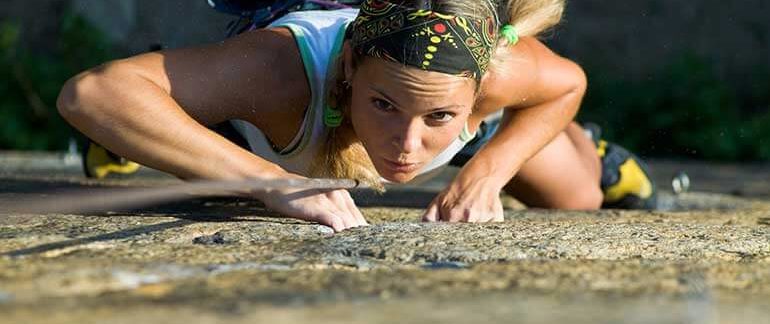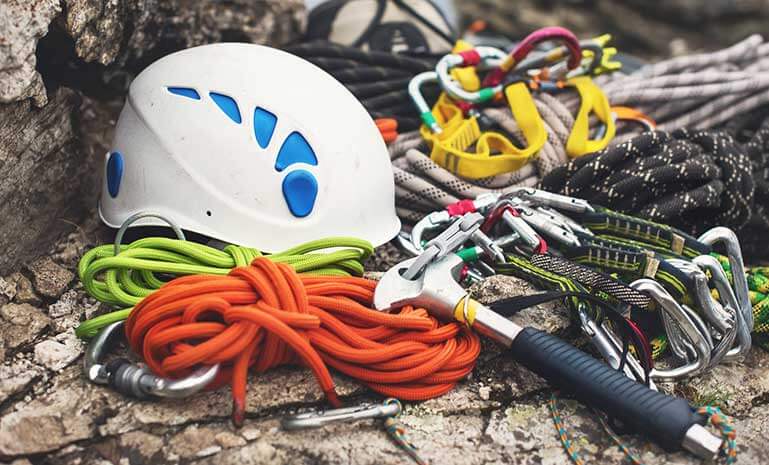
The Best Rock Climbing Destinations in the Midwest
February 11, 2018 | Moving
The best rock climbing destinations in the Midwest are somewhat less famous, but have many unique characteristics and offer many experiences for those brave enough to seek them. The sport of outdoor climbing is complex and deeply linked with the sense of adventure and exploration.
All across the world natural rock formations exist, waiting to be discovered and climbed. While some are well traveled to and others are hidden away deep in the wilderness, many have been found and developed by people who love to ascend these striking features.
Climbers constantly roam the country in search of new areas, typically referred to as crags, to develop for new and differing challenges.
Traditional and Sport Climbing in the Midwest
The best rock climbing destinations in the Midwest are often less developed than say, Indian Creek, and are frequently based on traditional climbing. While the Red River Gorge is everyone’s favorite exception, most climbs don’t have bolted routes. Climbers must bring their own gear (see below) with them to place in cracks and imperfections in the cliffs.
In Midwest states like Michigan, Illinois, and Kansas, crags see less traffic than more popular regions due to lower population density and the spread-out nature of the geography, so climbers who develop these areas are typically less inclined to use permanent bolts.
When there are long stretches of blank edges, you may find a stray bolt scattered helpfully across the distance, but they are often somewhat farther apart than what one would call comfortable when reaching for the next hold to proceed up the route.
While there is no inherent difference in the movement between the types of climbing, traditional climbing takes significantly more gear and experience, and can sometimes be a point of contention between newer and older generations of climbers.
Bouldering in the Midwest
The best boulders (boulders are generally short routes that do not require a rope) are easier to develop than a longer wall climb. A boulderer simply needs to set down their pads, brush some holds, and go, assuming the rock is of good quality.
Rock climbing is a much lengthier and complicated process. First and foremost identifying stable rock is what adventure climbing is all about. Besides climbing up, the climber must slowly clean climbing gear from the wall while dangling from a rope.
There are limitations to this, as climbers are not inclined to travel the distances across the Midwest for one boulder problem, so these areas are typically formed in boulder fields with many standalone assemblies of rock. One famous destination is in Hueco Tanks, Texas, and sees climbers visit from across the world.
Bouldering areas can be found all across the Midwest, but it’s likely the best rock climbing destinations in the Midwest have yet to be developed. When it comes to any sport, convenience is a large factor. The best areas may never be well trafficked if they are too far away from civilization. However, many of the best locations actually have less traffic, and these hidden gems are often what people seek most.
Developing Climbing Strategies for Outdoors
Today, even the most outdoorsy people will climb for the first time at a climbing gym. While outdoor climbing can satisfy the need for exploration and adventure, it is extremely dangerous if approached incorrectly. When a single action can result in life or death, safety is critical. Climbing gear is all about safety. Few climbers in the world scale massive cliffs with nothing but a pair of shoes and a chalk bag. However, everyone else will need to protect themselves in case of falls.
Outdoor wall climbing gear can include ropes, draws, cams, nuts, portaledges, and pitons. The gear you use really depends on how serious a wall you decide to climb. Bouldering outdoors requires climbers to use bouldering pads as well as a trusted spotter. Keep in mind, bouldering is often more dangerous even though you are significantly closer to the ground.
All this gear can be confusing and bulky, but it makes one of the most freeing adventure sports safe and repeatable. From Illinois to Ohio the details of safely approach climbs may differ, but the principles remain the same. Climbers look for the best outlets in the region for finding their sense of adventure.
Some Basic Types of Rock Climbing Gear and Equipment

Before setting out on your next climing adventure, you might need some equipment to keep you safe while you’re on the rocks:
- Rope: One of the most critical pieces of gear, never leave home without it!
- Belay Devices: an ATC or Grigri is most common, control your rope and allow you to protect your climber safely while climbing and lowering
- Carabiners: used to hook, connect, or hang other pieces of gear
- Slings: Loops of rope used for anchors and stability
- Draws: Clip your rope into bolts and protection with these to protect from falls
- Harness: The way you connect yourself to the wall via the rope and other gear
- Cams: Place these in cracks when there are no bolts around to protect from falls
- Nuts: one of the most simple types modern protection, place in small imperfections in the rock
- Bouldering Pad: Fall on this while bouldering to keep your falls safe
Store your Climbing Gear at Metro Self Storage
If you have more gear than you have space, it might be a good idea to rent a small unit from Metro Self Storage. Or rent a larger unit so you can store your climbing gear, extra, clothing, and more. With flexible month-to-month units in a variety of sizes, it’s no wonder residents and business owners everywhere have chosen Metro Self Storage as their premiere storage unit since 1973. Find a location near you and rent your unit online today!




